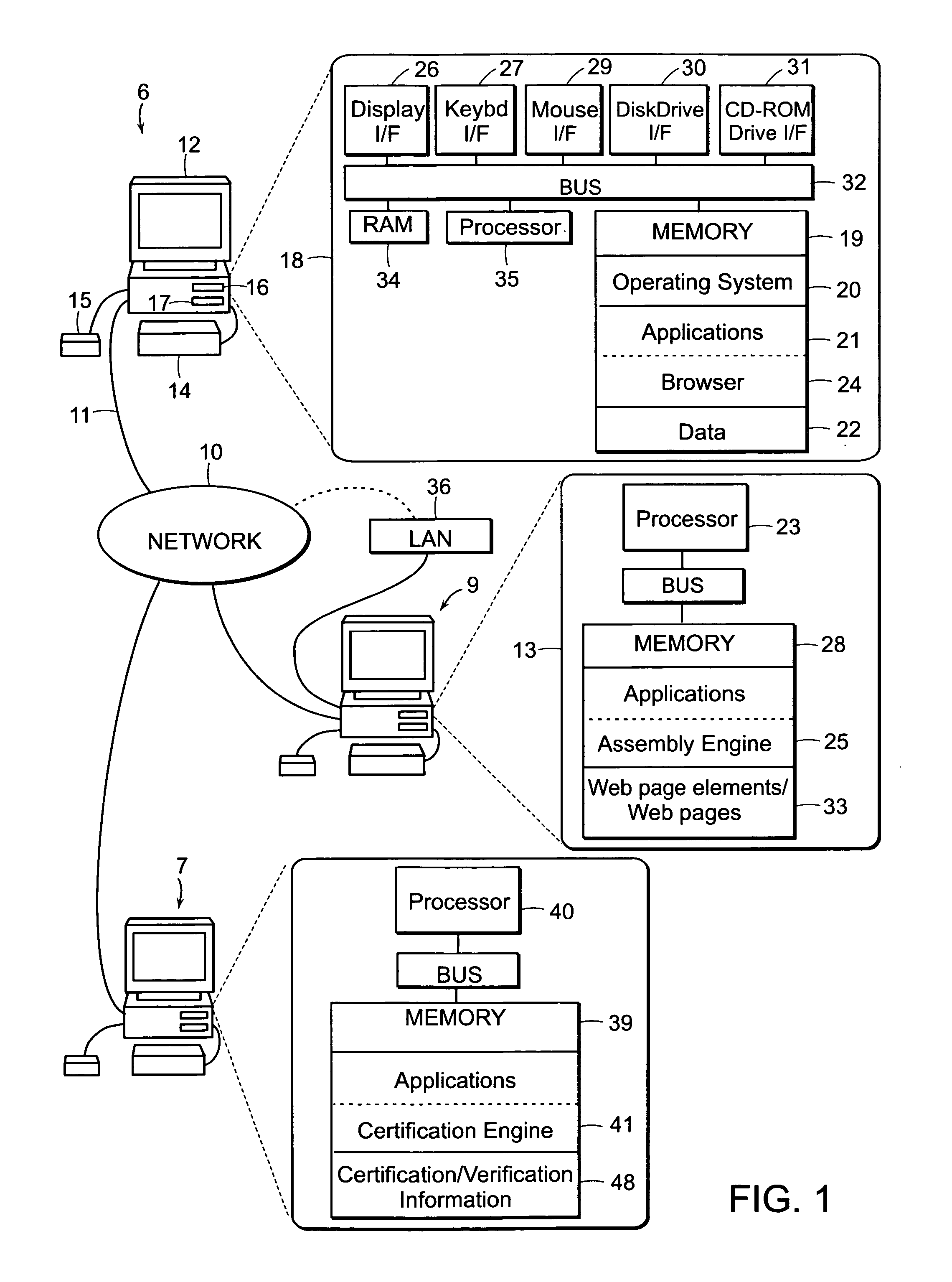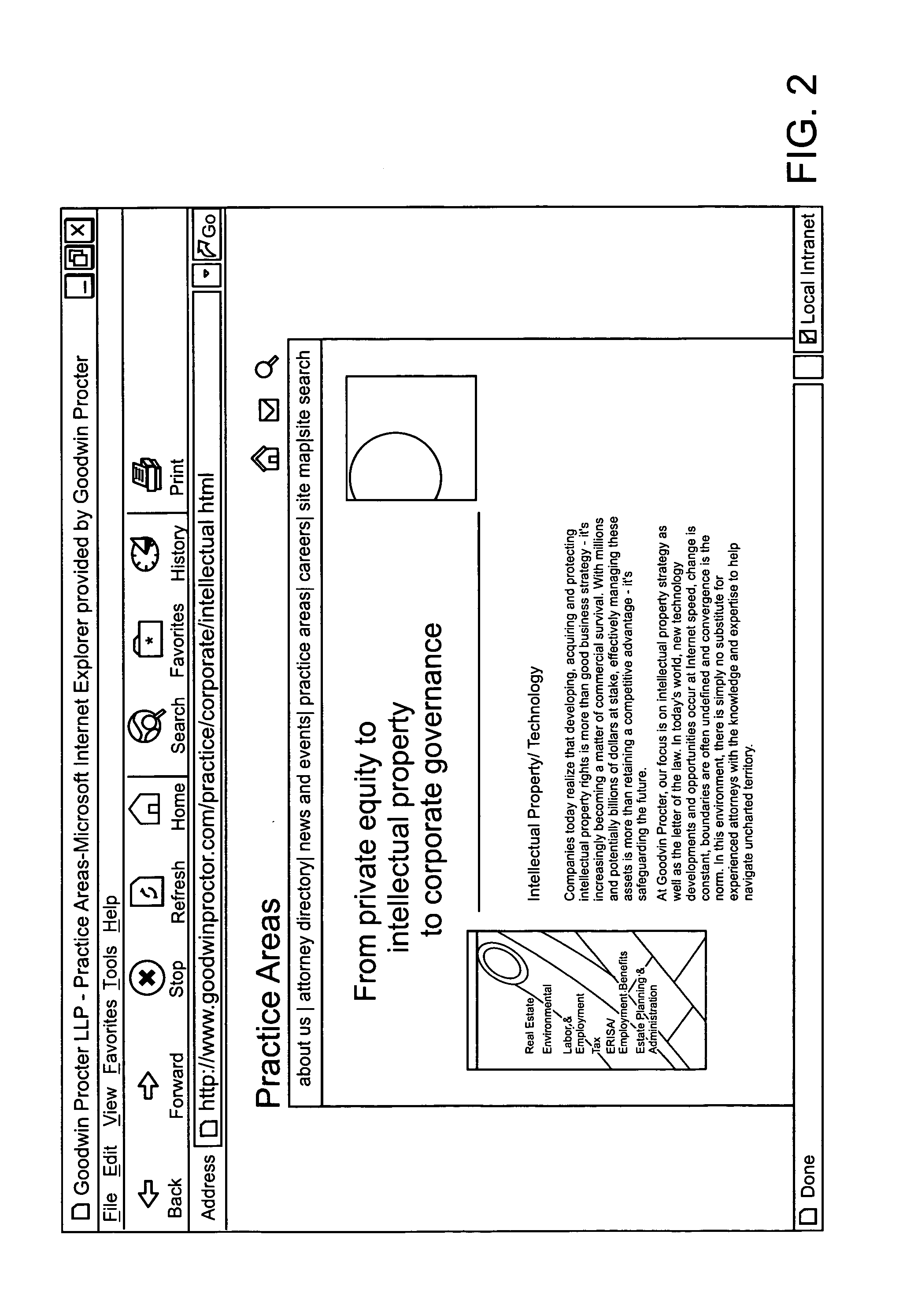Web site identity assurance
a technology of identity assurance and web site, applied in the field of electronic communication systems, can solve the problems of no brand on which to build an on-line business, users and services are not always certain, and users will not be willing to make on-line purchases that requir
- Summary
- Abstract
- Description
- Claims
- Application Information
AI Technical Summary
Benefits of technology
Problems solved by technology
Method used
Image
Examples
Embodiment Construction
[0037]The present invention will now be described in detail with reference to the accompanying drawings. While the present invention is described in the context of an Internet based data communications network, which includes a specific number and type of components, the system of the present invention may be incorporated into data communications networks of many structures and sizes (e.g. mobile networks). The drawings are intended to provide one example of a data communication network configuration in which a system of the present invention may be implemented and are not intended to limit the applicability of the present invention to other network configurations.
[0038]The following description of the preferred embodiments of the invention relates to Web pages. It is noted up front, however, that the invention is not limited to use with Web pages.
[0039]Rather, all aspects of the invention can be used with any computer generated content including, but not limited to, rows in a datab...
PUM
 Login to View More
Login to View More Abstract
Description
Claims
Application Information
 Login to View More
Login to View More - R&D
- Intellectual Property
- Life Sciences
- Materials
- Tech Scout
- Unparalleled Data Quality
- Higher Quality Content
- 60% Fewer Hallucinations
Browse by: Latest US Patents, China's latest patents, Technical Efficacy Thesaurus, Application Domain, Technology Topic, Popular Technical Reports.
© 2025 PatSnap. All rights reserved.Legal|Privacy policy|Modern Slavery Act Transparency Statement|Sitemap|About US| Contact US: help@patsnap.com



